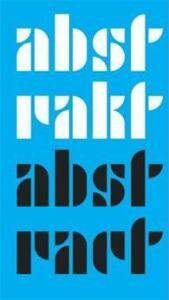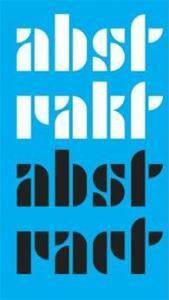
- Retrait gratuit dans votre magasin Club
- 7.000.000 titres dans notre catalogue
- Payer en toute sécurité
- Toujours un magasin près de chez vous
- Retrait gratuit dans votre magasin Club
- 7.000.0000 titres dans notre catalogue
- Payer en toute sécurité
- Toujours un magasin près de chez vous
Description
Defining abstract art has indeed prompted many a discussion right up until the present day. Within the scope of Classical Modernism's historical discourse where Kandinsky's definition of the ?spiritual? in art is of central importance, the category ?abstract? is still home to several completely different conceptions. Even in the 1920s the debate surrounding the conception of abstraction in terms of the legitimacy of modern art led to a great deal of controversy. Above all, it has been the American contributions to the debate in the period after the Second World War that have left it on this footing. \n\n?abstrakt / abstract? is the title of both the exhibition and the book, which - against the backdrop of a general focus on with the so-called new, figurative painting - engages in differentiated manner with various forms of abstraction produced by the second and third generation of artists post 1945. Under the auspices of the exhibition differing concepts of the abstract image will be illuminated through presentation of various representative artistic positions. Within the diverse array of works it is possible to witness an idea taking shape and hence an understanding of abstraction that manifestly distances itself from art history's mythically charged discourses regarding legitimacy and the concomitant debate about modern masters revolving around the much vaunted ?genius? of the artist's person. A more unpretentious openness towards concepts of the abstract image emerges in the works by the most recent generation of artists, pragmatically undermining the traditional idea of Classical Modernism and fundamentally extending the dimension of what we consider to be abstract today. \n\nThe compilation of positions here describes a historical strand of abstraction in painting in the 21st Century. The references back to the history of abstraction on the part of the artists are extraordinarily diverse and equally harmless, that is to say devoted alone to the constitutive conditions of creativity. We are dealing with works and settings that take up the heroic argot of Modernism but that often appear smooth and devoid of pathos in tone and furthermore, visualize their own style. The artists are working in liminal areas of characteristic pictorial forms within the tradition of abstraction, transforming thus traditional styles and gestures. The individual works and objects present a permanent challenge to the viewer's perception - many artists opt for processes that one might describe as strategies of disguise and concealment: images as objects of camouflage that persistently lead one astray and - in the scope of this hybrid formalism - reveal their formal and contextual complexity and beauty. \n\nThe works of the following artists will be shown: Tomma Abts, John Armleder, Domenico Bianchi, Tony Cragg, Helmut Federle, G?nther F?rg, Bernard Frieze, Damian Hirst, Albert Oehlen, Jorge Pardo, Tal R, David Reed, Anselm Reyle, Gerhard Richter, Gerwald Rockenschaub, Martina Steckholzer, Wolfgang Tillmans, Gert & Uwe Tobias, Toon Verhoef, Peter Zimmermann, Heimo Zobernig
Spécifications
Parties prenantes
- Auteur(s) :
- Editeur:
Contenu
- Nombre de pages :
- 160
- Langue:
- Allemand
Caractéristiques
- EAN:
- 9783936859799
- Date de parution :
- 20-02-08
- Format:
- Livre broché
- Dimensions :
- 220 mm x 310 mm
- Poids :
- 681 g

Les avis
Nous publions uniquement les avis qui respectent les conditions requises. Consultez nos conditions pour les avis.






